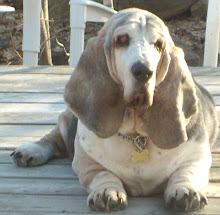The Tragedy of "Free To Good Home"
© Copyright 1997-2000, PetRescue.Com
Most people have good intentions when they advertise a cat or dog as "Free To Good Home". They care what happens to the animal and are not interested in making money. All they want to do is find a nice family that is willing to give the pet a loving, responsible home.
The tragedy occurs when the animal is mistakenly put into a situation where it is neglected, abandoned, abused, or even sold for lab experimentation. Sadly, this sort of thing happens thousands of times each day across America.
Giving any pet away is misguided. People tend not to value what they don't pay for. If you charge a nominal fee of $35-$45 or more for an animal, the new owner is more likely to take their commitment to the pet seriously. A free pet is a disposable pet!
Paying a fee for a pet shows good faith on the part of the new owner and demonstrates their willingness to properly care for the animal. The truth is, there is no such thing as a "free" pet anyway. By the time a cat or dog is checked out by a vet, including shots, worming, health testing, and spay/neuter, a "free" pet will easily cost in excess of $100, and that's just for starters. A responsible person who would properly take care of an animal will understand this and will not be opposed to paying a reasonable fee for a healthy pet, especially if some or all of these health items have already been taken care of.
Still not convinced? Then ask yourself these questions, "If a person cannot afford to pay an adoption fee for a pet, how will they be able to afford the normal expenses of proper pet care? And how will they ever afford vet bills when the pet gets sick?"
If you are uncomfortable with asking a fee for the pet, consider including food, toys, supplies, etc. as an added incentive. The idea is not to make a profit, but to ensure the good intentions of the new owner. In any event, the animal should be "fixed" and have its "shots" before it is adopted out and these costs alone can easily equal $45 or more. Use the adoption fee to recoup your expenses.
One final thought on this subject - if you absolutely don't want to take any money yourself, ask the adoptor to make the check out to a local animal shelter or SPCA instead. These organizations can surely use the help!
What can happen to a pet that is given free to a casual, uncommitted owner?
*
Abandoned to the streets. This is the most likely scenario that occurs when an uncommitted owner tires of a pet. Street animals suffer every day of their short lives. The end always comes painfully, either from violent trauma or from lingering disease.
*
Handed over to Animal Control and euthanized. People who do not take their responsibilities seriously always take the easy way out!
*
Marginally Owned. The pet will not be cared for properly and is often allowed to roam the streets.
*
Abused. The owner will not make the effort to properly train the animal. Often this leads to inappropriate responses from the owner and abuse of the pet when it "misbehaves".
Next, we would like you to be aware that there are dishonest people who routinely obtain animals for profit by fraudulently answering "Free To Good Home" ads. They are usually very persuasive and friendly. They know all the "right" answers to your questions because they do this sort of thing on a regular basis. Some may even bring their kids along to make you think they are a loving family!
The most important thing you can do to discourage this kind of person is to charge an adoption fee! This makes it much more difficult for them to realize a profit so they will usually not bother contacting you.
What can happen to an animal if you let one of these con artists have it?
*
Used to "live train" fighting dogs. The animal you expected to be a pet is used to bait a fighting dog and is literally torn to pieces.
*
Sold at Flea Markets or Auctions to anybody who happens along. Most of the time these animals are neglected, kept in cramped, unsanitary conditions and often become sick and diseased.
*
Sold to a Class-B Dealer who then resells the animal to a research facility. People who practice the despicable act of rounding up strays to sell them are referred to as "Bunchers". At the research facility, the animal may suffer abuse and most likely will be euthanized after they are finished with it.
*
Used for breeding stock in a "Puppy Mill". The living conditions in most of these establishments are deplorable. Bitches have continuous litters, one after the another.
*
Used as live food or bait for exotics like snakes or alligators.
*
Sacrificed in cult rituals. Some people find this hard to believe, but the FBI has many files documenting this kind of activity in our country.
How can you help to prevent these tragedies?
1.
Convince your local newspapers to post warnings in their pet classified sections! A lot of papers across the country are already doing this.
2.
Call "Free To Good Home" ads and warn them! Check newspapers regularly and let people know what could happen to their pet and tell them how to prevent this avoidable situation.
3.
Advise people not to adopt out pets at Halloween! Solid black and solid white cats are especially in danger at this time of the year. Cult members and vicious pranksters are on the lookout for animal victims. It is a common practice of most shelters and rescue organizations to never adopt out black or white cats during the Halloween season.
Subscribe to:
Post Comments (Atom)

No comments:
Post a Comment